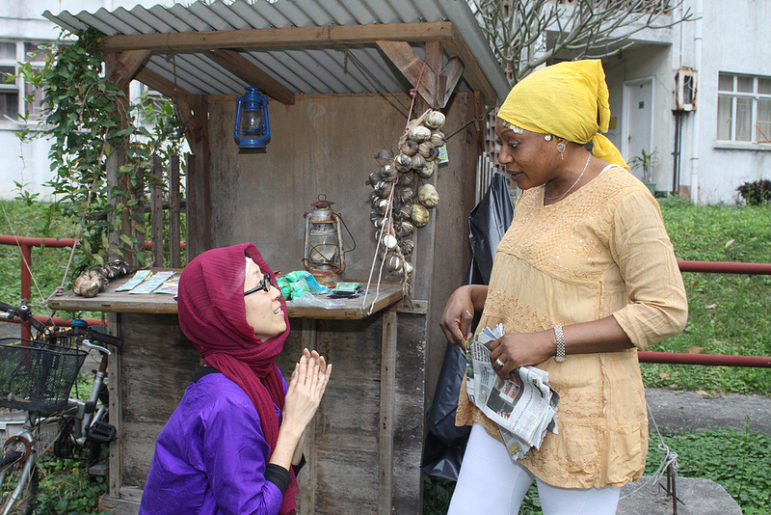
August 1, 2016; Herald-Whig
The Mission of Hope in Stillwater, OK offers homeless individuals and families supportive housing, food, case management, transportation, laundry facilities and life skills training. Housing options include emergency shelter, transitional housing, permanent supportive housing and permanent supportive housing for veterans. Almost every city in America has the equivalent of The Mission of Hope, and more and more communities and agencies are conducting poverty simulation workshops to help find understanding and solutions for the poor.
The OSU Payne County Extension office offered The Mission of Hope a poverty simulation workshop designed to help participants begin to understand what their clients endure to survive month to month. It is not a game. During the simulation, participants role-play the lives of families living at or below the poverty level. Participants are sensitized to what it is to be poor, albeit in a room condensing one month of challenges into a day, gaining insight into the state of chronic crisis that consumes so many working poor families. At least half the family groups ended the simulation exercise homeless without getting their nutritional needs met. Participants described feeling “overwhelmed, helpless, lonely, confused, inadequate and desperate.”
You spend a lot of time waiting, whether it’s for a bus, a ride, your turn in line or an approval. Transportation is a constant challenge. You have to jump through a lot of hoops to get any kind of help. Some people don’t have anywhere to go or anyone to turn to. The Stillwater News Press reports that any unexpected expense, not matter how small, can start a chain reaction that ends with you on the street. People don’t treat you with respect and you’re often expected to pay for assistance with your dignity. These are the kinds of things a group of Mission of Hope homeless shelter residents say they wish social service providers and employers could understand.
When you see someone injured, it doesn’t take mental gymnastics to figure out how you feel; discomfort automatically washes over you. But empathy can fail when it is most needed. Stress can limit the psychological space that people have for others. Power can numb those who possess it at the expense of those who don’t. Enshrining bureaucratic rules, enforcing quotas, and just getting through the tedium of the day can kill empathy. But can simulating what it is to be on the receiving end of social services can help providers remember why they are there and how difficult it is to be poor?
Sign up for our free newsletters
Subscribe to NPQ's newsletters to have our top stories delivered directly to your inbox.
By signing up, you agree to our privacy policy and terms of use, and to receive messages from NPQ and our partners.
Many of the participants found themselves feeling frustrated and even becoming angry after being sent back and forth across town, taking time they couldn’t afford out of their day and forcing them to use more of the precious transportation vouchers they’d been given. Transportation was a major issue for many of the families as they dealt with car repairs and struggled to find gas money or someone to give them a ride. Several lost their jobs when they missed work because they didn’t have transportation. Some participants found themselves homeless because they paid a car payment or a full utility bill and didn’t have enough money left to cover housing. Others forgot about food.
The poverty simulation experience enables participants to look at poverty from a variety of angles and then to recognize and discuss the potential for change within their agency and community.
In an article well worth the read, Fortune recently wrote about the rise of poverty simulation workshops, including a few horror stories of some taking the concept too far. They dubbed the practice “misery tourism” and wrote “What was done with little attention in the past has become a small cottage industry, as the privileged try to understand at least a bit of what the poor and refugees face.” And, indeed the descriptions of some of the events are creepy – a “homeless plunge” here, a “fun and insightful” foray into a “rundown, oppressive slum” there. Is it better or worse than the busloads of philanthropists that sometimes descend upon a neighborhood when a high toned philanthropic gathering is nigh?
We would be very interested to hear what our readers think about these manufactured reality shows. —James Schaffer












